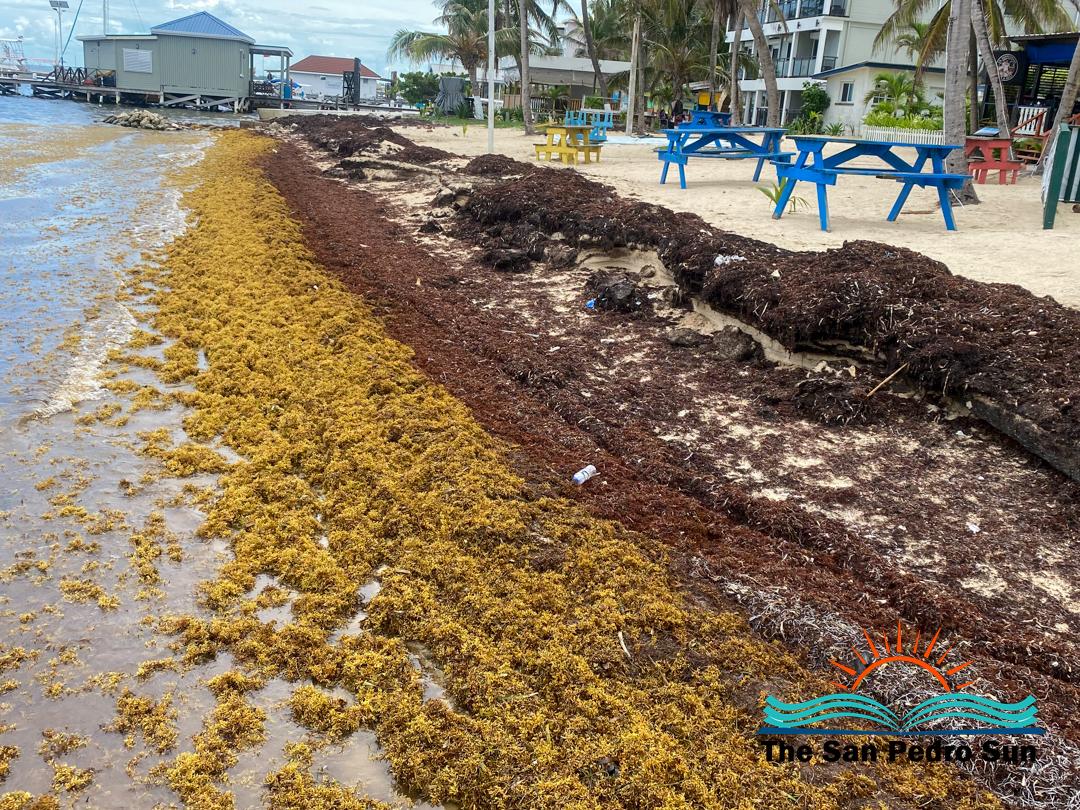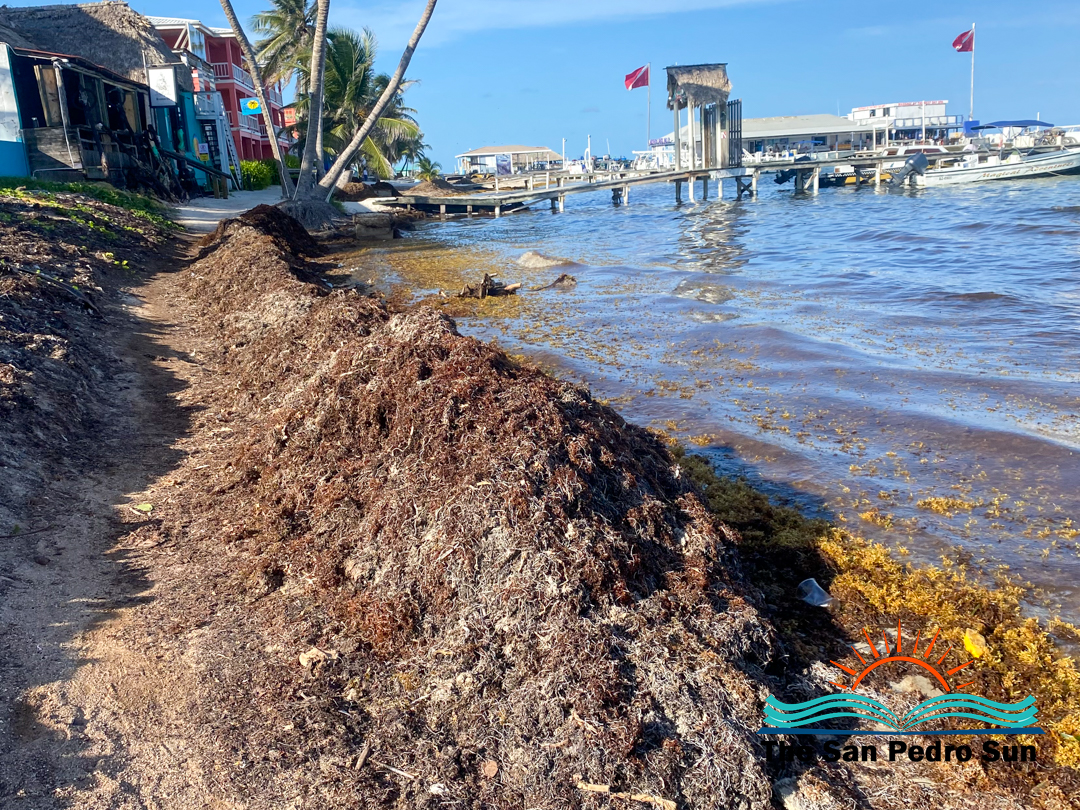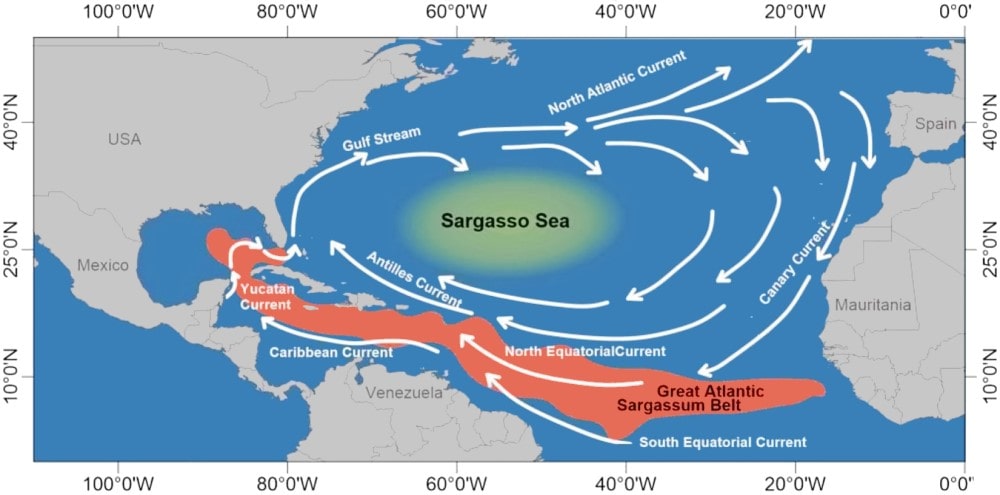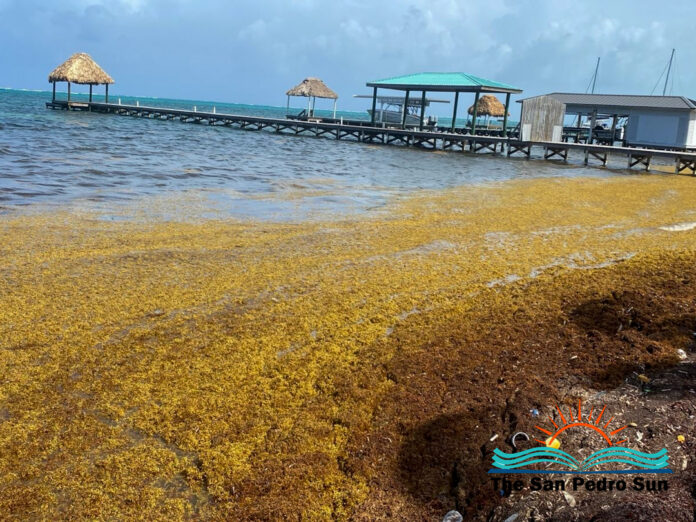This year has brought record levels of Sargassum to the Caribbean, with unprecedented amounts of the brown algae affecting coastlines across the region, including Belize. On Ambergris Caye, the heavy influx has forced some beachfront businesses in San Pedro Town to shorten operating hours, while others have extended seasonal closures until October, when the seaweed is expected to subside.
Beaches along the island’s windward coast are choked with Sargassum, straining the San Pedro Town Council’s (SPTC) resources and affecting hotels and restaurants. Despite hiring additional staff and removing tons of seaweed from downtown beaches, the council’s efforts have not been enough. Business owners are also battling the algae, with limited success.
Operators of beach spas report a significant decline in clients, while restaurants say customers are staying away due to the stench. Sargassum emits a rotten-egg odor as it decomposes. Estel’s Dine by the Sea has been closing early in the evenings, citing low tourism numbers and the ongoing seaweed problem. Other establishments report slight relief when the influx decreases, though many say the smell still drives customers away.
Some hotels typically close during the slow season for renovations, but several plan to remain closed longer than usual this year. Margaritaville Resort, on northern Ambergris Caye, announced on August 15 that it would remain closed until November 14, citing renovations and the impact of the Sargassum season. Outside the reach of SPTC sanitation crews, remote northern areas are among the hardest hit.
The National Meteorological Service of Belize reports that satellite and surface observations continue to show large amounts of Sargassum in Belizean waters, with impacts expected to persist in the coming days.
Area Representative Honorable Andre Perez acknowledged the challenge. He noted that Sargassum Harvesters acquired by the Hol Chan Marine Reserve are helping to collect the seaweed before it reaches the shore. “We are doing our best, but it is a regional issue. We need to wait until the season ends and hope for a good high season,” he said. Perez added that discussions with stakeholders are ongoing, with potential solutions including using the seaweed as landfill, burying it, or converting it into construction material.
Scientists link this year’s massive bloom to agricultural runoff, warming ocean waters, and shifts in atmospheric patterns. The Sargassum crisis has grown steadily since 2014, becoming a seasonal environmental and economic challenge across the Caribbean.

Share
Read more

